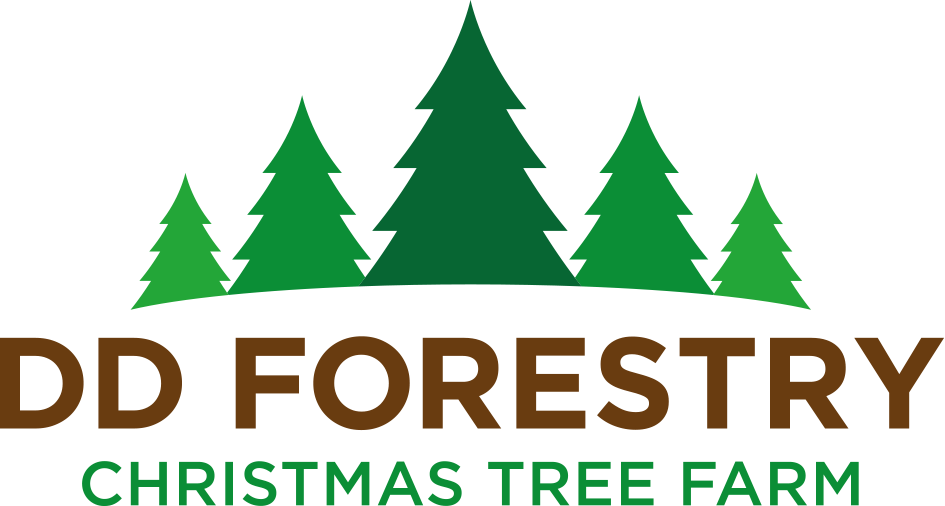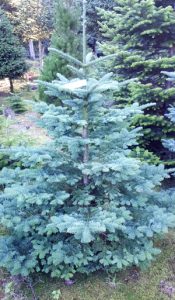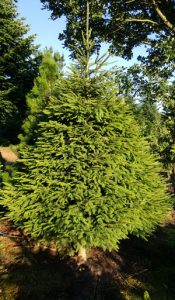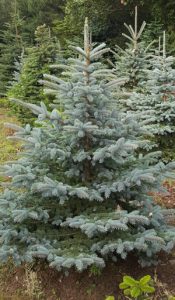Species of trees
Noble Fir
(Ables Procera)
The Noble Fir is native of Washington and Oregon where they are left to grow to enormous heights. It was first introduced to Great Britain in 1830. The needle structure on this species are bluey grey/green and long, upswept and at right angles to the twig. You will often find large upright cones with downturned feathery bracts. The structure of the tree make it a favourite with customers and is great for hanging Christmas decorations.
Nordman Fir
(Abies Nordmanniana)
This has widely become the most popular Christmas tree available today, favoured for its attractive foliage and shape. It’s needles are not sharp and do not drop readily which makes it an excellent choice for customers who require a long lasting, fresh looking tree.
Lodge Pole Pine
(Pinus Contorta Varlatifolia)
An inland variety of the North American Shore Pine. Its strong trunk was used by the North American Indians for supporting their lodges or wigwams. The needles are green/yellow and found in pairs normally around 6-9cm long. The Lodge Pole Pine often has brown egg shaped cones attached with a small sharp prickle on each scale. This Christmas tree is popular as they rarely lose their needles if well hydrated. Our regular pruning over its life span have led to perfect cone shaped Christmas tree.
Norway Spruce
(Picea Abies)
Often called the original Christmas Tree, it is still one of the most widely planted spruces. It short green needles and pleasant scent still make this a popular choice today. Must be kept well hydrated when indoors.





